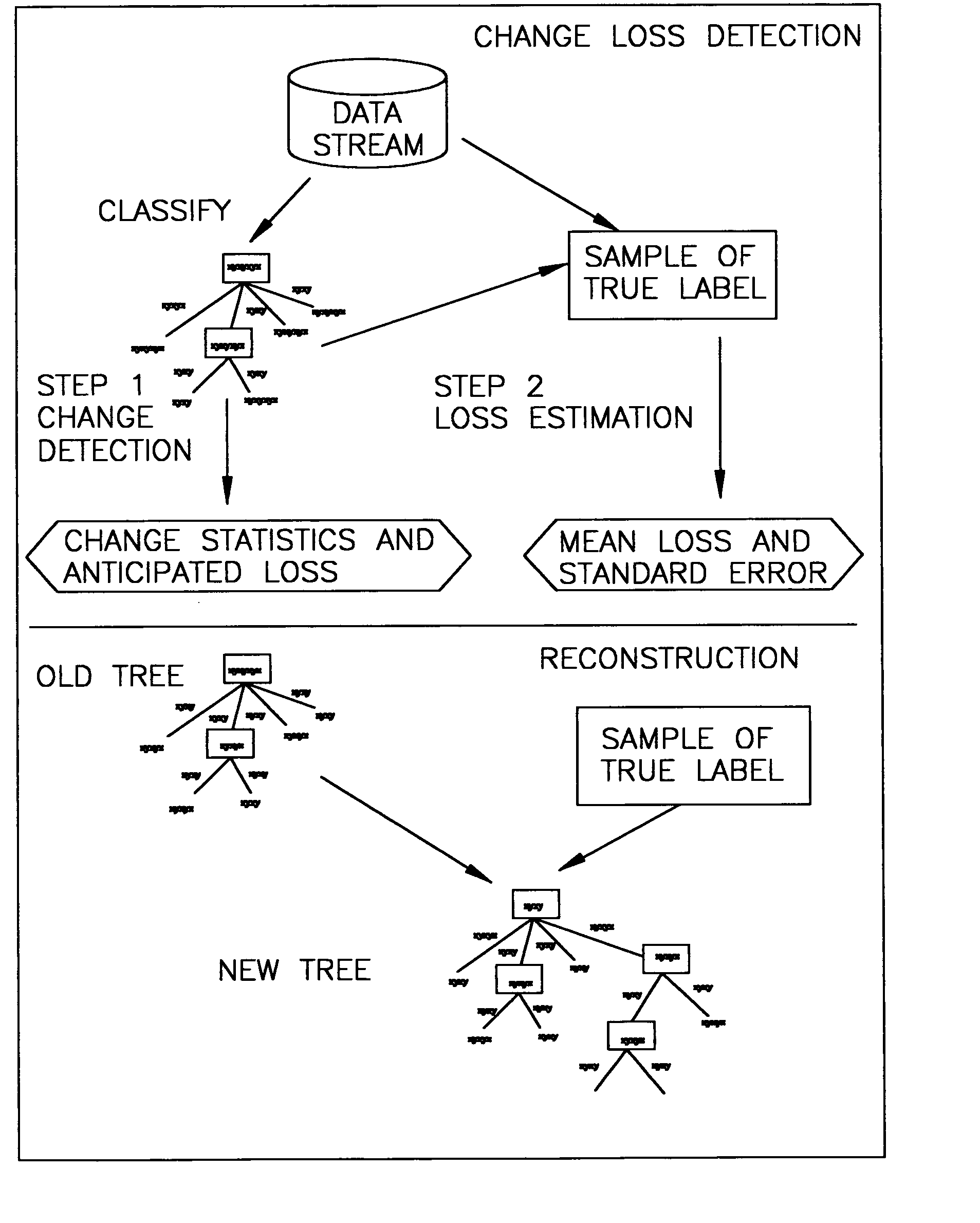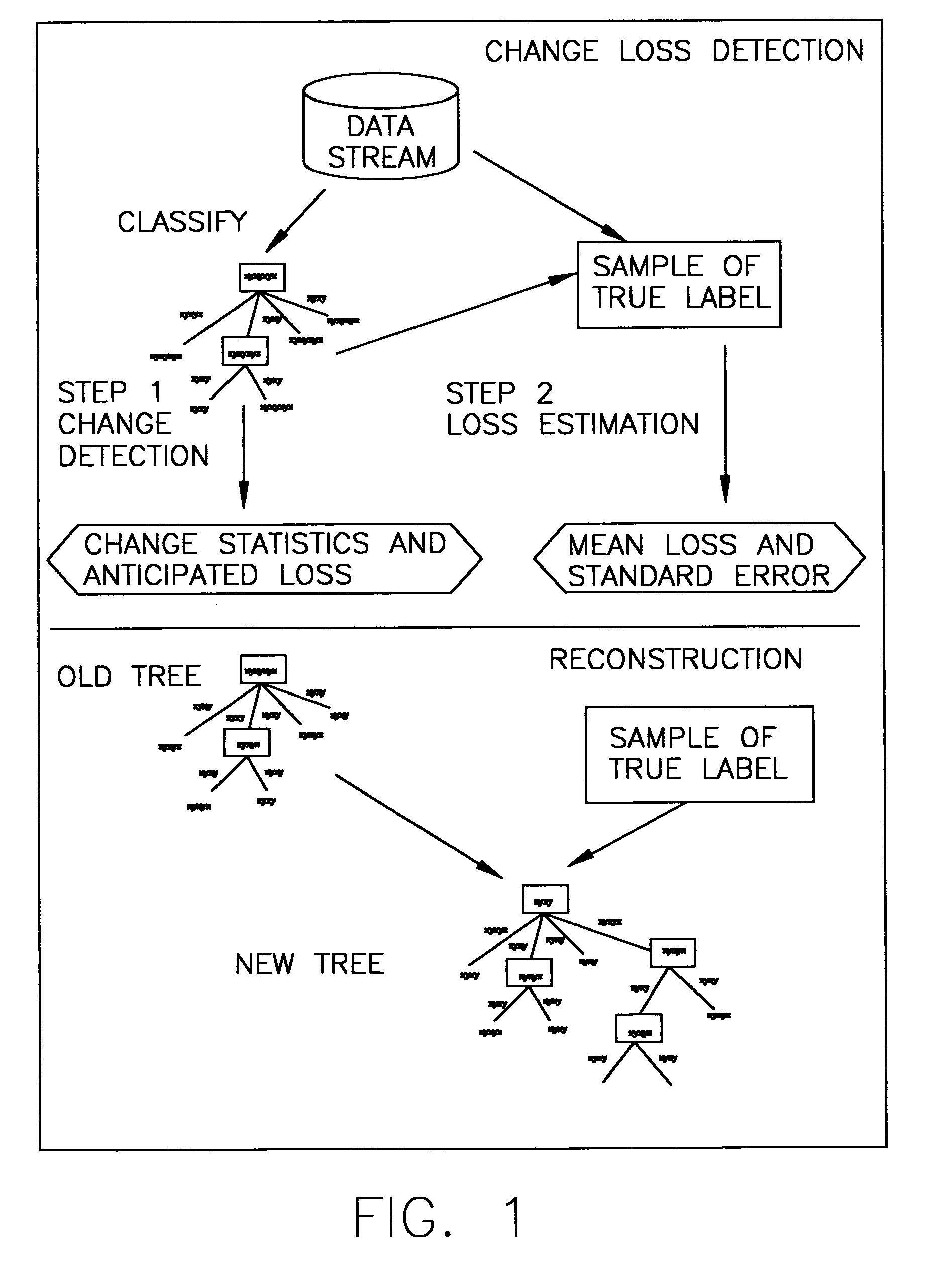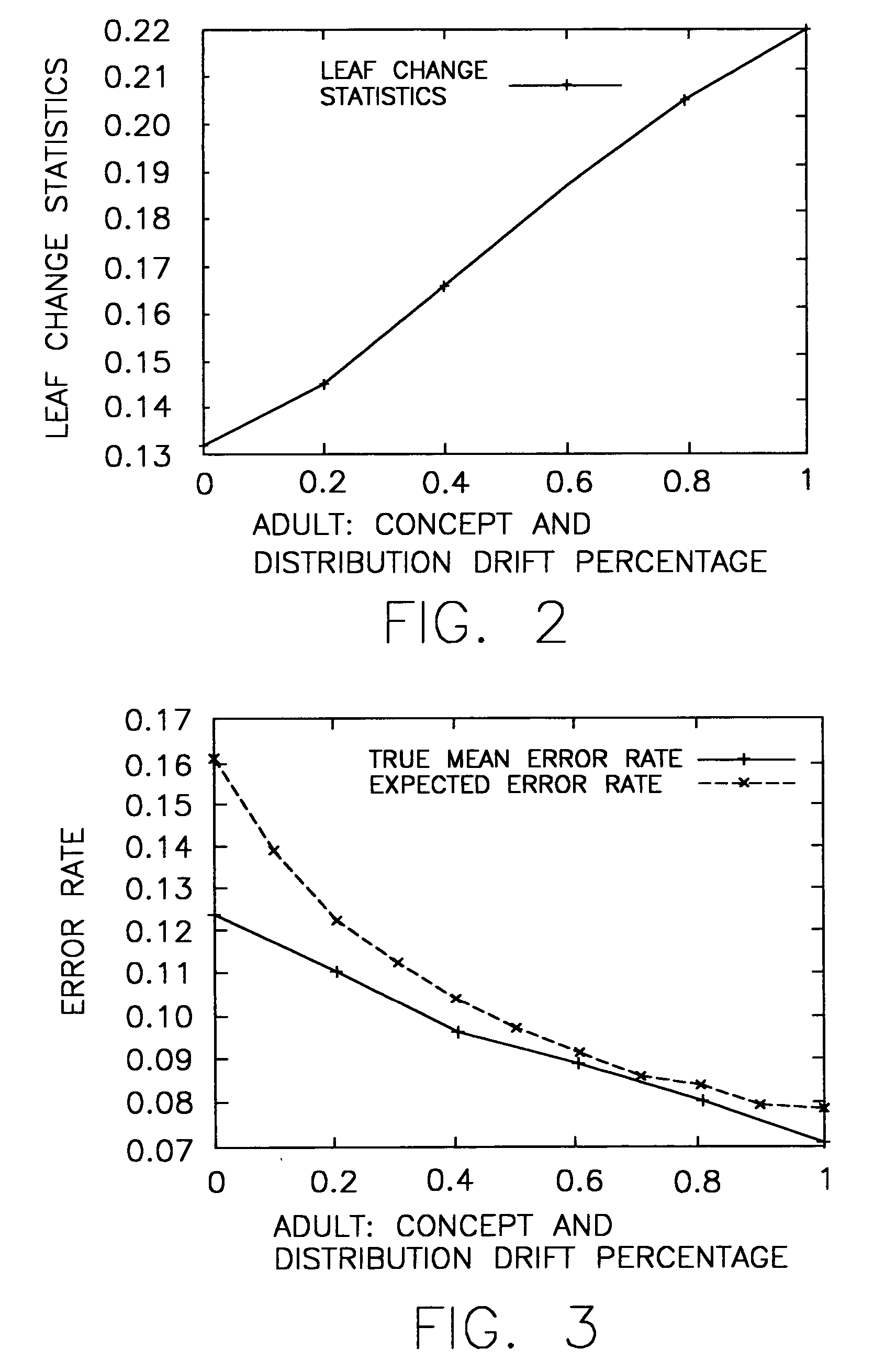System and method for continuous diagnosis of data streams
a data stream and continuous diagnosis technology, applied in the field of mining of timeevolving data streams, can solve the problems of inability to accurately diagnose data streams, inability to accurately identify data streams,
- Summary
- Abstract
- Description
- Claims
- Application Information
AI Technical Summary
Benefits of technology
Problems solved by technology
Method used
Image
Examples
Embodiment Construction
[0025] A flow chart which schematically illustrates a framework which may be employed in accordance with a preferred embodiment of the present invention is shown in FIG. 1. Change is detected in two separate steps. We define a few computationally efficient statistics that is correlated with possible changes in the data stream. The statistics do not use the true label of the data stream. These statistics are continuously computed and monitored “on the fly” when the model classifies data streams. When these statistical changes are higher than empirical thresholds, at the second step, a small number of true class labels of the data stream are actively sampled to estimate the loss using random sampling techniques. The loss is expressed in mean and confidence intervals. If the estimated loss of the model on the data stream is more than expected, the model is reconstructed by either updating its a posteriori class probability distribution or minor model reconstruction. Both are preferably...
PUM
 Login to View More
Login to View More Abstract
Description
Claims
Application Information
 Login to View More
Login to View More - R&D
- Intellectual Property
- Life Sciences
- Materials
- Tech Scout
- Unparalleled Data Quality
- Higher Quality Content
- 60% Fewer Hallucinations
Browse by: Latest US Patents, China's latest patents, Technical Efficacy Thesaurus, Application Domain, Technology Topic, Popular Technical Reports.
© 2025 PatSnap. All rights reserved.Legal|Privacy policy|Modern Slavery Act Transparency Statement|Sitemap|About US| Contact US: help@patsnap.com



